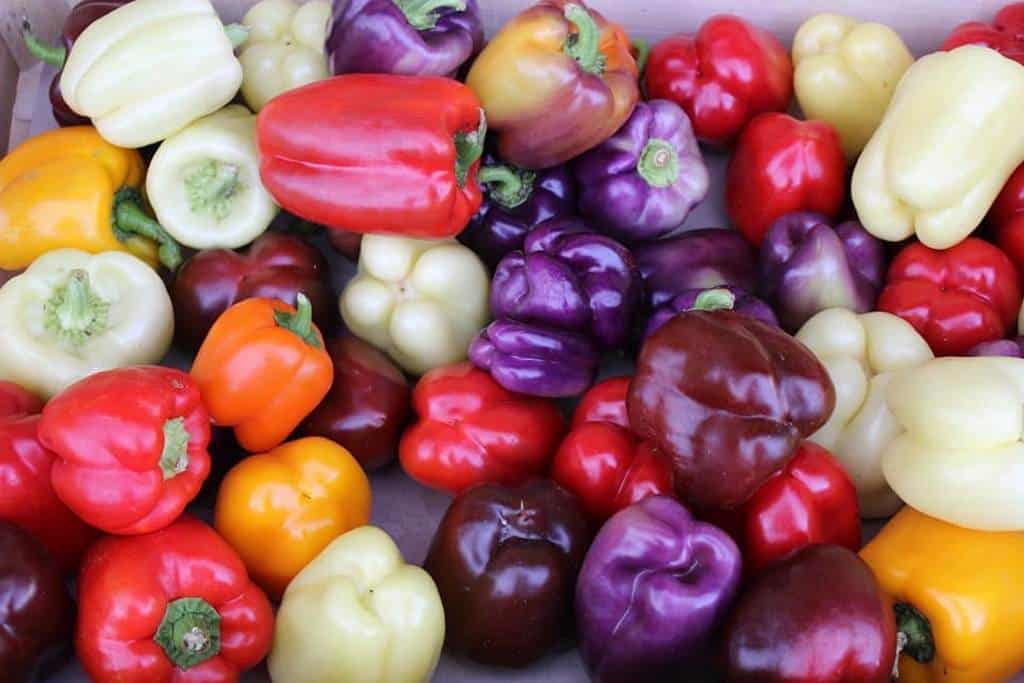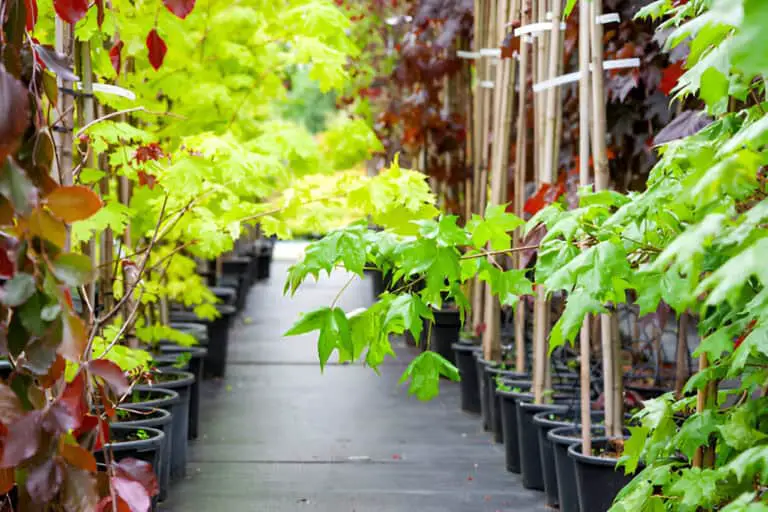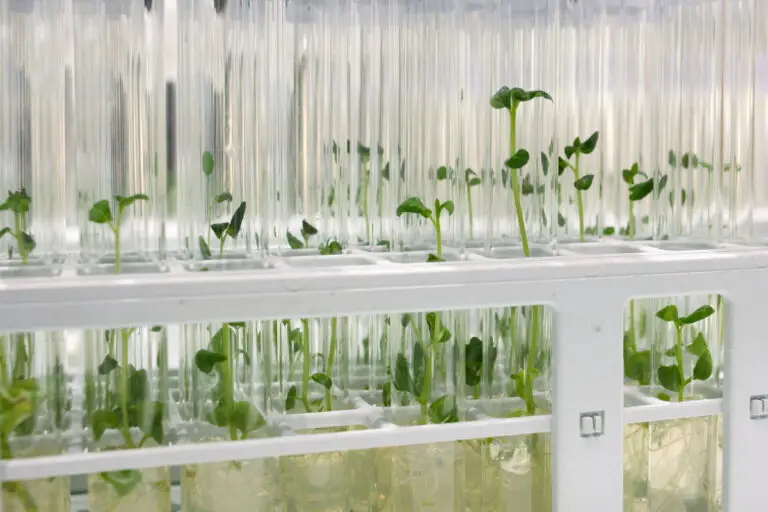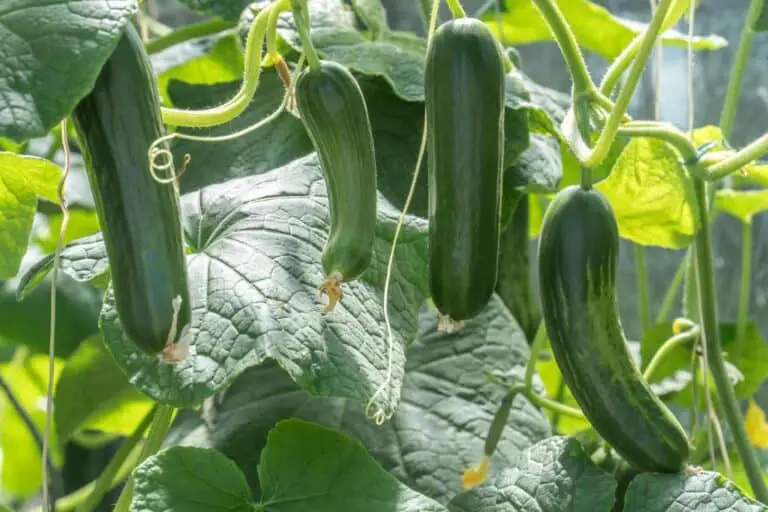Bell Pepper Color Stages Change Progression: Ripeness Fact!

There are many colors of bell peppers, but red, yellow, and green are the most common. There are also many variations of these colors, such as orange, brown, and purple.
All of these colors can be found in both multi color and tri color varieties. Multi color bell peppers are a mix of two or more colors, while tri color bell peppers are three different colors that are evenly distributed throughout the pepper.
Have you ever noticed that bell peppers change color as they mature? Well, it all has to do with the carotenoids present in the pepper. Carotenoids are plant pigments that are found in high concentrations in bell peppers.
These pigments are what give bell peppers their vibrant colors. As bell peppers mature, they go through different color stages.
Why Are Bell Peppers Available in Different Colors?
Bell peppers come in different colors because of two different factors:
1. Different stages of maturity that the plant goes through.
2. Different variety of the pepper
1. Different stages of maturity.
When a bell pepper first grows, it is green. As it matures, the color of the plant changes to either red, orange, or yellow, depending on the variety of pepper. The different colors of bell peppers indicate to farmers when the pepper is ready to be picked.
- Red bell peppers are the most mature and have the highest concentration of carotenoids, which are responsible for the red color. It is also an indication that it has reached its maximum ripeness.
- Yellow and orange bell peppers are less mature and have lower concentrations of carotenoids.
- Green bell peppers are the least mature and have no carotenoids.
- White and purple bell peppers fall somewhere in between red and green in terms of maturity and carotenoid concentration.
2. Different variety
Different types of bell peppers come in a variety of colors, each with their own unique flavor. Red bell peppers are the sweetest, while green bell peppers have a more bitter taste. Yellow and orange bell peppers are somewhere in between the two.
Each color of bell pepper is actually a different variety, with different nutritional properties. Red bell peppers contain the most vitamin C, while green bell peppers have the most vitamin A. Yellow and orange bell peppers are a good source of both vitamins C and A.
Does a Bell Pepper’s Color Affect Its Nutritive and Flavorful Qualities?
The color of a bell pepper does not impact its nutritional value, but it can affect its flavor.
For example, green bell peppers are the least sweet and have a slightly bitter taste.
Red bell peppers are the sweetest and have a full-bodied flavor. Orange and yellow bell peppers fall somewhere in the middle.
When it comes to nutrition, all bell peppers are a good source of vitamins A and C. They also contain antioxidants, which can help boost your immune system and protect your cells from damage. Bell peppers of all colors are low in calories and fat, making them a healthy addition to any diet.
Bell Pepper Color Stages Change Progression
As the bell pepper seed germinates and the plant grows, it goes through several color stages.
The first stage is all green, then the pepper will turn yellow or white. The next stage is when the pepper turns red, orange, or brown. Finally, the last stage is when the pepper turns black.
Each color stage has different benefits for the plant:
- The green stage is when the plant is growing the most and getting ready to produce fruit. Green peppers are the least sweet and have a slightly bitter taste. At this stage, green peppers have the highest nutritional value. They are high in vitamins C and A, as well as potassium.
- The yellow or white stage is when the fruit is ripening and getting sweeter. As the pepper ripens, its nutritional content drops until it has a lower vitamin and mineral count than when it was still green.
- The red, orange, or brown stage is when the fruit is at its peak sweetness and flavor.
- And finally, the black stage is when the fruit has gone bad and needs to be thrown away.
Why Do Some Bell Peppers Not Change Color?
So, what happens when your bell peppers don’t change color? While there could be several reasons for this, the most likely explanation is that the peppers are not getting enough sunlight.
Peppers need at least six hours of sunlight per day in order to change color. If they’re not getting enough sun, they’ll stay green.
Other possible explanations for why your bell peppers aren’t changing color include: too much nitrogen in the soil, which can prevent the peppers from ripening.
Picking the peppers too early can be the cause of this issue. While it’s tempting to pick them early, this isn’t advisable.
Another reason is that you are planting a variety of pepper that doesn’t change color when it ripens. Certain pepper varieties continue to be green even after they are completely ripe, which makes them suitable for consumption in this way. Others may become orange, yellow, or various hues when ripe.
If you suspect any of these might be the case, try adjusting your gardening practices or choosing a different type of pepper next time.
Do All Peppers Start Green Before Changing Colors?
It’s a common misconception that all peppers start out green before changing colors. So do all peppers start green before changing colors?
No, all peppers do not start green before changing colors. In fact, there are many varieties of peppers that are born in other colors, including yellow, orange, and red.
Some peppers, like green peppers, mature and ripen to another color. Other peppers, like red peppers, mature and ripen to their namesake hue.
Do Green Peppers Ripen After Picking?
While bell peppers of all colors are picked when they’re mature, green bell peppers are picked before they’ve had a chance to fully ripen and turn red, orange, or yellow.
This is why they have a slightly bitter taste and a crisp texture. However, green peppers will continue to ripen after they’re picked, but this process is slower than if they were left on the pepper plant.
To speed up the ripening process, put your green bell peppers in a paper bag with a ripe banana or apple. The ethylene gas that these fruits give off will help the peppers to ripen faster.
You can also put them on a sunny windowsill or outside in direct sunlight for a few hours each day. It usually takes about two weeks for green bell peppers to fully ripen after picking.
Conclusions
Bell peppers are a member of the nightshade family, which also includes tomatoes and potatoes. The different colors of bell peppers indicate different stages of ripeness. For example, green bell peppers are the least ripe, while red bell peppers are the most ripe.
The color of a bell pepper also affects its flavor. Green peppers are the most bitter, while red peppers are the sweetest. Yellow peppers have a milder flavor than either green or red peppers.
So, if you’re looking for a sweet or savory flavor in your bell pepper, choose red or green, respectively. If you’re looking for a balance of both, go for yellow or orange. And no matter which color you choose, you’ll be getting a nutritious vegetable!






